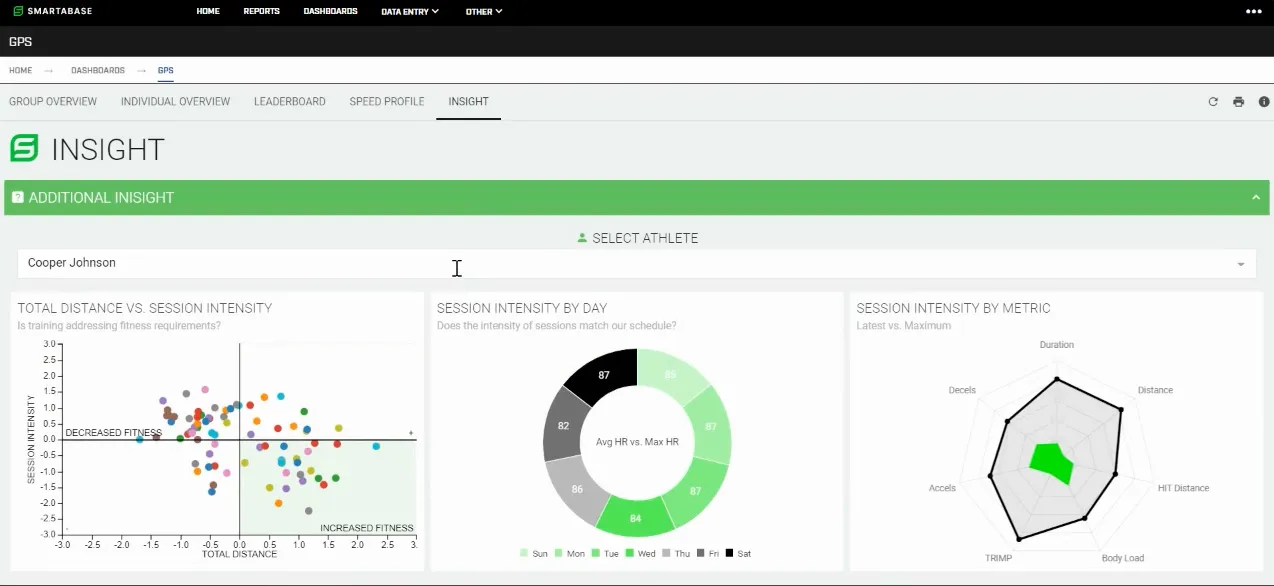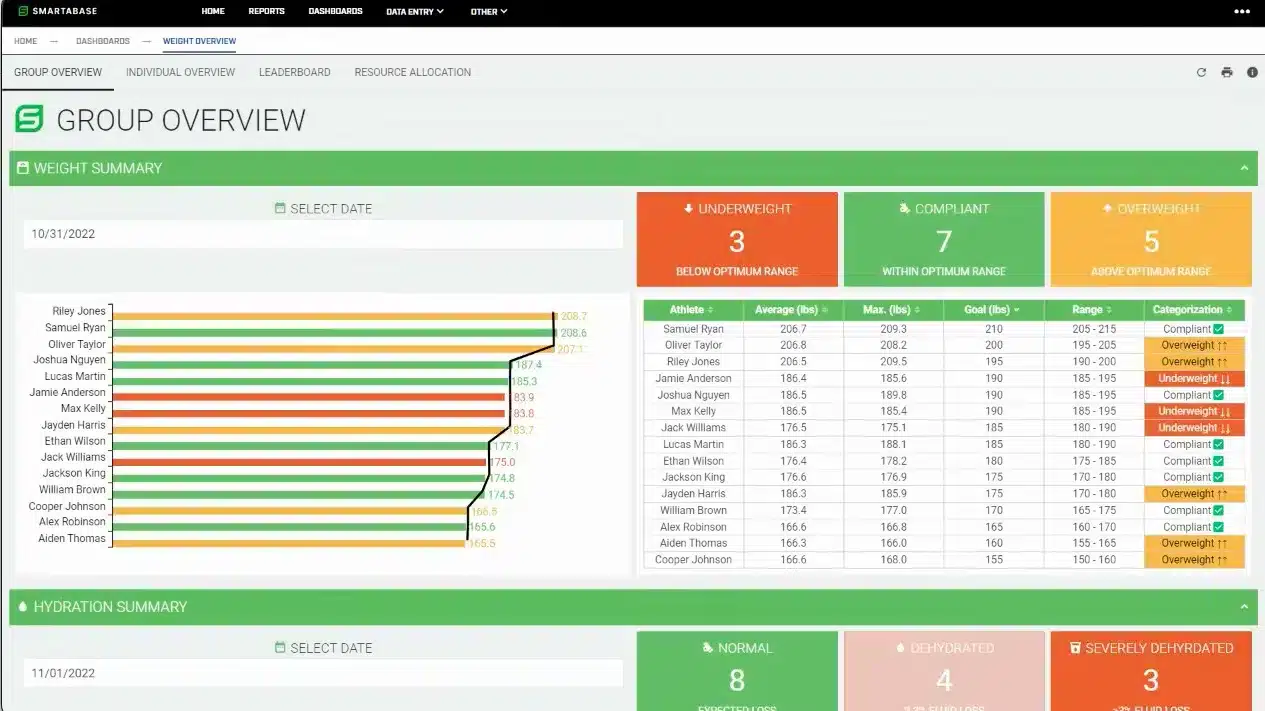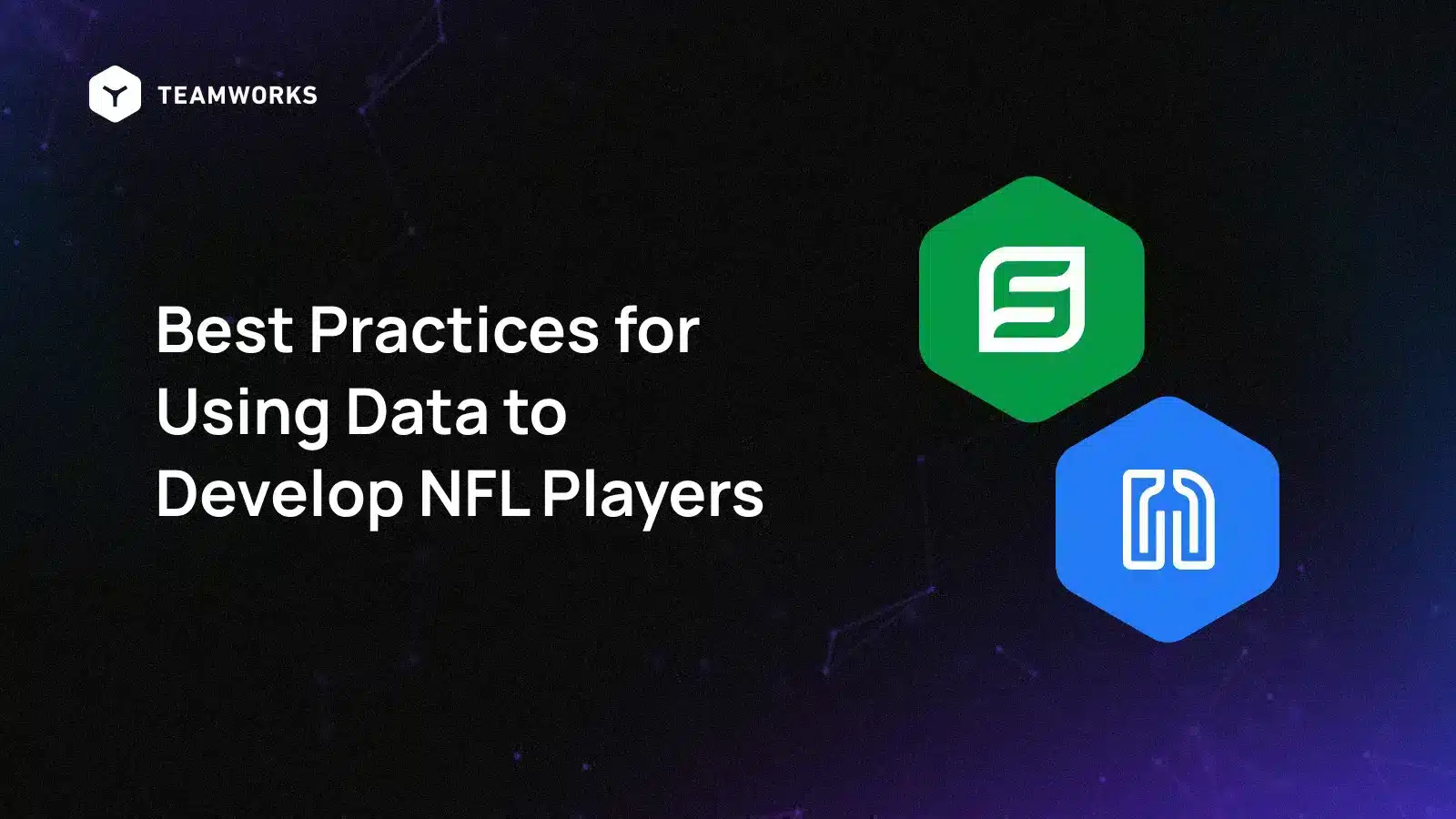By Tyler Lindon
Using multiple technologies, NFL teams are able to capture more information than ever before to provide greater insight into player performance, health, and wellness. Below are some of the best practices weve gleaned from NFL teams successfully using data to develop their players.
Jump to:
- Coach Buy-in
- Driving Change Step-by-Step
- Getting Players On Board
- Simplifying Movement Screens
- Personalized Player Nutrition
- Informing Roster Decisions
- Risk Mitigation
Coach Buy-in
The most successful implementations of player development data and other analytics in the NFL start with head coach buy-in. When the analytics staff works closely with the coaching staff to present this information in an easily digestible way that relates to the goals the they care about, they drive acceptance and application of it from the top down.
For example, a head coach often wants to know how fast players move in practice. Smartabase captures maximum velocity from the Catapult GPS units, and imports this into each athletes profile. When the coach sees how these numbers measure up against what a player is capable of, they might ask why hes not reaching top speed.
The answer could be because hes in a position that usually only requires sprints of up to 20 yards, which isnt enough to reach maximum velocity, and often has to change direction to evade defensive players. This is an opportunity to collaboratively identify a metric that makes it easier to track this player’s development over time, such as the number of high intensity efforts. From there, youd work backward to see how many of these they typically accumulate on game day, and how practice totals compare to this.


Driving Change Step-by-Step
Smartabase allows teams to supplement automated system and device integrations with information imported from spreadsheets. This means staff can still keep the processes in place theyre most comfortable with, while removing some of the grunt work.
A lot of strength and conditioning coaches and other performance practitioners are still very old school and spend much of their time working in spreadsheets. Theyre comfortable with Excel, and a phrase Ive heard a lot is, Thats how weve always done it, and it works.
While theres a faster and more accurate way to capture data using versatile integrations with devices from Catapult, TeamBuildr, Notemeal, and many other vendors, some people still insist on collecting player development data the way theyve always done it, at least until they come to see the value in removing manual steps. The ability to import spreadsheets helps reduce some of the resistance to change.
Even though its not ideal, it’s important to be realistic about how much change you can make right away. The more small wins you accumulate, the more trust youll earn and the more improvements youll be able to make over time.
Getting Players on Board
Creating simple dashboards that are all about performance is one of the easiest ways to give data back to NFL players and engage them in the development process. They want to know how fast their 40 time was, and how much weight they moved in the squat, bench press, and other lifts.
Players get excited when they can see how theyve improved and also want bragging rights in the locker room. Having easy access to their data in Smartabase creates a sense of ownership and responsibility and makes them more likely to play an active part in their development process.
Simplifying Movement Screens
One of the quickest and easiest ways weve seen NFL performance teams have an impact is by digitizing manual assessments.
For example, the Functional Movement Screen (FMS) is performed by most teams for every member of the roster several times per season to create a movement quality baseline. Often, this screening is done entirely by hand, including handwritten descriptions of an athletes limitations in any of the archetypal movement patterns, such as the overhead squat.
With Smartabase, FMS data can be captured digitally via a mobile app, and photos of the player performing every element of the test can be uploaded so they no longer need to comment on limitations.
The completed FMS report then becomes part of the individual development profile, which is accessible via Smartabase to all relevant staff members. Data from other systems or regular assessments, such as force plates, can be combined with FMS data to help monitor and flag athletes with an elevated risk of injury.
This makes it easier for the performance and medical teams to come together and create a tailored plan that includes corrective exercises to address the players movement deficiencies, while the S&C coach is simultaneously working to develop other physical qualities like power, strength, and speed.
Personalized Player Nutrition
NFL teams are using Smartabase and Notemeal to configure performance nutrition dashboards. These help players ensure their eating habits and supplementation strategy aligns with their performance goals and the teams expectations for them and their position group. Certain organizations fine players if they go outside of their target weight ranges, so they have a good reason to show up to regular consultations with the nutritionist/dietician to get personal recommendations.
Data from pre- and post-practice weigh-in and weight-outs is also used to provide customized suggestions for replenishing fluids, particularly when someone has become dehydrated during a long or intense practice.
To simplify meal planning at the facility and on the road, Smartabase and Notemeal are being used by NFL teams to record players meal choices and favorite post-workout foods.

Informing Roster Decisions
Teams are also utilizing player development profiles to inform roster management decisions. There comes a point in each preseason where front office staff and the head coach have to cut players who dont make the grade. With Smartabase, they have a holistic view of each athlete. This doesnt just apply to the physical testing the league has always used to assess talent. Development profiles also provide a snapshot of what each players attitude and work ethic is.
Risk Mitigation
Another win for front office, coaching, and performance personnel is that documenting player development decisions in Smartabase provides a level of risk mitigation. When an organization is managing and caring for players whose contracts are worth millions of dollars, they need to be careful to do no harm.
Collecting data consistently and using it within repeatable workflows provides an audit trail that shows what a team did in practice and the weight room, what the results were, and how staff intervened. This combination of transparency and accountability protects the players, the organization, and practitioners in the event of an issue.
In the end, successfully using data to drive NFL player development requires the performance team to consistently demonstrate value to the coaching staff, players, and front office alike. The teams weve worked with who have done this well have addressed the factors we discuss above. To learn more about how NFL teams are using Smartabase and Notemeal to support and track player development, please contact us.
